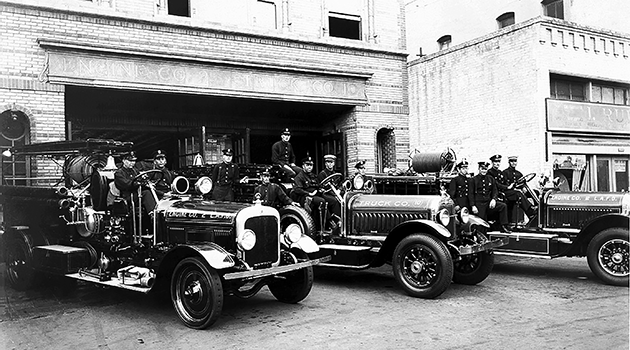
Frank’s Note: Since the late 1800’s the LAFD has lost 274 members in line of duty deaths. This is a story that many years later has a happy ending for family members thanks to the initiative of then Captain Steve Ruda, and the support of the LAFD, the Los Angeles Firemen’s Relief Association, and the LAFDHS.
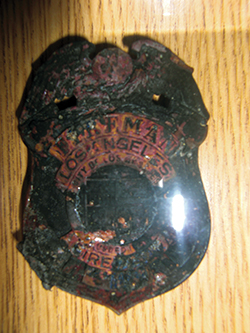
It was Sept. 7, 1935, when Fireman George Damron and Captain Lawrence Krumsiek were working at Engine Company No. 2 at First and Chicago Streets on the east side. Little did anyone know that the day would turn to tragedy for both men, their families, and the LAFD. A fire broke out at the Mission Painted Fabric Company at 1481 East 4th St. around some flammable liquid vats. Three fire alarm boxes were pulled by a passerby and the Signal Office transmitted Box 6122, which brought Engines 2, 5, 17, and 24; Trucks 24 and 17; Salvage 24; and Battalion 7. At Engine 7’s quarters, Krumsiek checked the box register tape as the gong bells tapped out the signal and responded with the crew on Engine 2.
As the engine neared the fire, Krumsiek sized up the situation and ordered two lines laid from the hydrant at 4th and Gless Streets. Stopping in front of the building, extra lengths of hose were quickly pulled off and Krumsiek sent two firemen into the doorway with one line and took Damron with him into the loading dock opening. From this vantage point, the two bore their way into the sea of flames. While the men of 2’s were so engaged, other companies arrived from the west and south and the burning structure was soon surrounded with lines working from every vantage point. 24’s went around the east side of the building while 5’s and 17’s covered the west and front as the truckmen strategically placed ladders to the roof.
In the seemingly short space of a few minutes, the principal fire was extinguished and all that remained were a few obstinate corners and several barrels that continued to burn. The water by this time was running out of the building practically ankle deep, and floating on top of it were paint, gasoline, wax, and other materials used in the plant’s process. Krumsiek and Damron had penetrated well into the building when a cloud of vapor, presumably from one of the heated open containers lying around, flashed around the two men and simultaneously set fire to the flammables floating on the water in which they were standing. As they quickly retreated, they lost their footing on the slippery floor and fell amid the burning oils, but rising again, they made their way to the outside of the building, emerging as two living torches blanketed in flames. Comrades nearby ran to their assistance and quickly smothered the flames and removed their burning clothing.
An ambulance was called from the Boyle Heights Station and the two badly injured men were rushed to Georgia Street Receiving Hospital. Meanwhile CO2 17 (a special apparatus carrying carbon dioxide for flammable liquid fires) arrived and the Division 1 chief arrived to take charge of the fire.
It was a tight-lipped, heavy-hearted bunch of men who put out the rest of the fire and awaited news of their stricken brothers. At Georgia Street Receiving Hospital, both men were found to have second- and third-degree burns on their faces, throats, hands, fingers, forearms, and legs up to the hips. Krumsiek was in the worse condition of the two, for it was believed he had inhaled some of the flames as he had lain in them. Even one side of his metal helmet had been melted off by the terrific heat.
This capable, well-liked officer, earmarked for big things in the Department by all who knew him, passed away on the following morning, Sept. 8, at 9:45 a.m. in the presence of his family.
Damron, having possibly the worse external burns of the two but no internal burns, seemingly rallied for a few days, then congestion of the lungs and urinary poisoning set in and after a valiant fight, he died on Sept. 12.
From an article written by Bill Goss and originally published in the Firemen’s Grapevine, and edited by Frank Borden with photos added.
Seventy-three Years Later
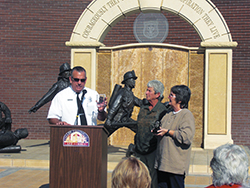
After his death, Damron’s widow, Mildred, was presented with an LAFD Fireman’s Badge as a remembrance of his service and sacrifice. The badge remained with the family until another day of tragedy for the Damron family. On Nov. 17, 2008, the Los Angeles City Fire Department responded to a brush fire in the northern part of the city. The Sayer fire destroyed 500 mobile homes despite heroic efforts by firefighters battling flames in the face of fierce Santa Ana winds.
The Damron family mobile home was totally destroyed except for a handful of small items. As George’s daughter, Charlotte, and two granddaughters, Pamela and Cheryl, sifted through the ashes, they found what looked like a badge.
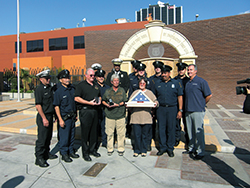
About that time, Captain II Steve Ruda from Fire Station 27 came by and identified the burned badge as an LAFD Fireman’s Badge. It was the presentation badge from 1935 and one of the only items recovered by the family after the destruction. Ruda said that the badge represented everything to a firefighter, and that firefighters work hard to earn it and maintain the honor associated with it. He could not let this badge be forgotten.
Ruda developed an instant rapport with the family and they agreed to have a special badge presentation, which was held at the Museum at Old Fire Station 27. The ceremony was held on Nov. 17, 2009, a year after the Sayer fire, in the LAFD Fallen Firefighters Memorial. Ruda was the emcee, Fire Chief Millage Peaks presented a new replacement badge to the two granddaughters, and Los Angeles Firemen’s Relief Association (LAFRA) President Dave Marino gave them an American flag that was flown over Fire Station 2. The original Fireman’s Badge recovered from the fire was then given to Jim Finn, president of the Los Angeles Fire Department Historical Society (LAFDHS), by the granddaughters to be displayed in the museum.
This was truly a special day for all who attended, including the members of Fire Station 2. The memory of Fireman George Damron rose from the ashes of the Sayer fire through the kindness of the Damron family, the initiative of Steve Ruda and the support of the LAFD, the Los Angeles Firemen’s Relief Association, and the LAFDHS.
Submitted by Frank Borden
.

